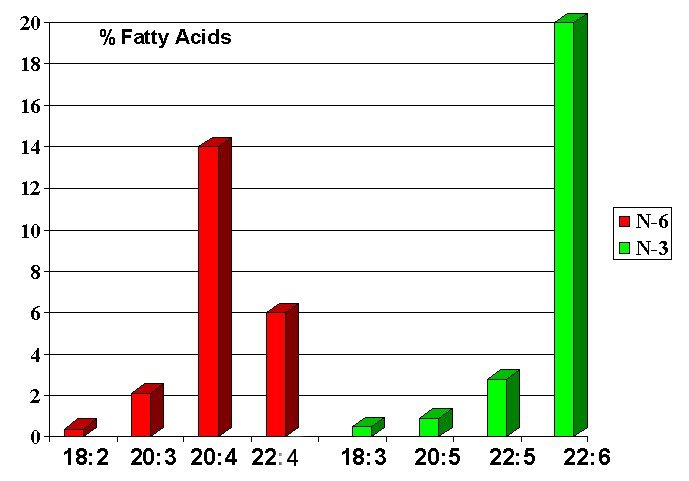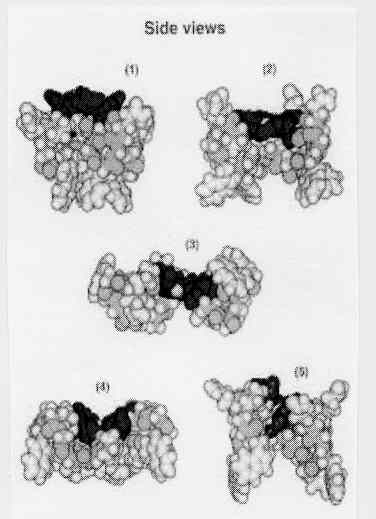There is a changing global panorama of mental ill health.17 Mental
ill health has risen in the last few decades to be in the top 10 in the
list of the burdens of ill-health. By 2020 it will be in the top three.
One specific example: the incidence of cerebral palsy amongst low birth
weight infants rose three fold between 1967 and 1987 in the UK. Hence vCJD
could be simply a symptom of the changing neural susceptibility especially
in the Northern regions. It is notable that the much publicised and feared
vCJD epidemic did not appear. With the appearance of BSE in the UK and Europe,
Japan and the USA, people are now looking more closely at brain disorders
than they were forty years ago. However, this argument does not preclude
the possibility that the misfolded prion did get into the food chain at
the beginning of the bovine epidemic, in large amounts, consequent on the
recycling of what are called downers in the USA, into the animal feeds.
The reduction in incidence of BSE in cows with return to natural diet
In the UK, with the exception of parts of the North and Wales, intensive
feeding of bovines had become very heavily practiced. When it became apparent
that BSE was in crisis numbers, it was then impossible for farmers to sell
their animals. The greater the crisis became, the more regulations were
enforced. The farmers did not wish to kill healthy animals nor did they
want to spend money on feeds for animals they could not sell, so they put
them out to eat grass. For the first time in decades, cows in England were
seen suckling their calves on green pastures! Thus, the cows began eating
green foods rich in the omega 3, alpha-linolenic acid, anti-oxidants, etc.,
and the calves had proper milk.
When BSE was first discovered, several cows died with it on the same farm.
The farmer put the rest of his herd of cows out onto the grass pasture.
From that day onwards, no more cows died in his herd. This experience is
identical to crazy chick disease in chickens found in Budowski's 1980 paper.1
The flock was dying in numbers and the day alpha-linolenic acid was introduced
to the diet no more died. Although no more of this farmer's cows died after
being re-introduced to grass, the cows in England began to die across the
country until all the intensively fed herds had BSE.
Note well that in the North, in Scotland, where the animals were reared
on pasture, there was no BSE.
BSE Conclusion I: Cow mothers fed EFA deficient diets, threaten
the fetal brain
An essential fatty acid (EFA) deficient diet influences the brain, liver,
and milk. Milk replacers for calves, missing EFAs and nerve growth factors,
distort calf brain development (a well established fact since the 1970s).
An intense, high protein diet (protein pellets made from dead animals),
which is aimed at physical growth, lacks brain nutrients and adversely affects
brain growth and integrity. The rendered animal products are grossly imbalanced
(protein far greater than EFAs) and specifically deficient in omega-3 EFAs,
which are needed for the brain and the blood brain barrier. Indeed several
others find the evidence on BSE unsatisfactory and have proposed similar
causes to do with trace element deficiency or excess protein. Such ideas
are not mutually exclusive as nutritional distortions involve many nutrients
simultaneously. In other words, poor maternal diet, deficient milk replacers,
and unbalanced growth diets deplete the developing brain, distort membrane
composition, and make young animal brains susceptible.
Conclusion II: Natural Prion changes to infective BSE type. Consequence
from well established and robust science:
EFA deficiency causes brain membrane leakage and structural distortion of
the membrane. Thus, the EFA deficiency destabilizes neural membranes. A
classical sign of EFA deficiency is leaking membranes. Membrane prion leaks
from the membrane with protein conformational change, followed by spontaneous
generation TO the infectious isoform, which equals BSE.
This explains the rapid appearance of BSE all over the UK intensively fed
herds, after the introduction of EFA deficient animal rendered protein.
The collapse of the whole herd so rapidly cannot be explained by a single
scrapie rogue mutation, as was suggested. It is ludicrous to imagine that
one mutated brain diluted in the animal feeds for hundreds of animals, never
mind the many thousands, could have been sufficient to explain the suddenness
of the BSE epidemic in the UK. The nutritional causation explains the suddenness
and wide spread nature of the crisis.
However, this is not to deny that, once the infective prion had moved into
the food chain en masse, it could spread in nutritionally susceptible
animals. At the same time, note that once the farmers returned their herds
to natural grazing with proper EFA diets, the epidemic subsided. However,
with unecological intensive feeding, BSE is still endemic in the UK with
many still affected.
. . . incorrect brain nutrition
can singly destroy the brain. . . . The EFAs are exceedingly important for
both the nutrition and health of animals and as food for humans.
Last century the principle applied
by the animal industry was grow them fast, fatten them fast, and sell them
fast. The BSE epidemic has proved that the system was gravely flawed. There
is a crying need for a new approach to animal husbandry-where the health
of both humans and animals is given priority. With rising obesity and mental
ill health creating alarms in the USA and across Europe, the high calorie,
high fat product of beef, pig, sheep, and poultry is no longer an option.
An ecologically fed and reared animal would be healthy both for the animal
and for human nutrition. If public confidence in the industry is to be restored,
then it is time for a radical re-think.
EDITORIAL COMMENT
We ask ourselves why this type of evidence of the nutritional cause of BSE
has been ignored and pointedly, not investigated. Huge sums of money have
gone into research on prions but nothing has been invested in the nutritional
distortion. Why? We wonder if one possible reason is that the Government
and the animal feed experts would expose themselves to a class action claim
for huge damages by admitting that BSE was caused by the experts misleading
the farming community on how to feed their cows and by their ignorance of
the scientific literature.
BSE is still present in the UK and has spread across much of Europe. Yet
there is none in New Zealand where naturally, omega 3 rich grass pasture
is used in abundance.
The important point is that there is enough closely related evidence and
detailed biochemistry in peer reviewed journals to assert that the nutritional
concept, should have been tested. Had it been correct, it would have saved
many animals, restored confidence in the system, and allayed public fears
of the impending vCJD epidemic. BSE, like crazy chick disease, would become
a feature of the past. As it is, the public has lost confidence in Government
scientists with an adverse effect on science as a whole.
__________
1Budowski, P., Hawkey, C.M., and Crawford, M.A.,
"L'effet protecteur de l'acide alpha-linolenique sur l'encephalomalacie
chez le poulet," Annals de Nutrition Alimentaire, 34: 389-400,
1980.
2NOHA tape: Michael A. Crawford, PhD, "Essential Fatty Acids
for the Brain and Heart," #161, audio and video, April 1997.
3Crawford, M.A., Gale, M.M., and Woodford, M.H., "Muscle
and adipose tissue lipids of the Warthog (Phacochoerus aethiopicus),"
International Journal of Biochemistry, 1: 654-8, 1970.
4Crawford, M.A., Gale, M.M., and Woodford, M.H., "Linoleic
acid and linolenic acid elongation products in muscle tissue of Syncerus
caffer and other ruminant species," Biochemistry Journal, 115:
25-7, 1969.
5Crawford, M.A., "Fatty acid ratios in free-living and domestic
animals," The Lancet (1): 1329-33, June22, 1968.
6Crawford, M.A., Gale, M.M., and Casperd, N.M., "Comparative
studies on fatty acid composition of wild and domestic meats," International
Journal of Biochemistry, 1: 295-305, 1970.
7Crawford, M.A. and K. Ghebremeskel, "The equation between
food production, nutrition and health," Food Ethics, Ben Mepham,
editor, Routeledge, London, pp. 64-100, 1996.
8Crawford, M.A., Budowski, P., Drury, P., Ghebremeskel,K., Harbige,
L., Leighfield, M., Phylactos, A., and Williams, G., "The nutritional
contribution to Bovine Spongiform Encephalopathy," Nutrition and
Health, 7: 61-8, 1991.
9Crawford, M.A., and Sinclair, A.J, CIBA Symposium, "Lipids,
malnutrition and the developing brain," pp. 67-92, Elsevier, Amsterdam,
1972.
10See the immediately following NOHA NEWS article, "NUTRITION
AND ALZHEIMER'S DISEASE," by John W. Crayton, MD, specifically see
the material "on regulation of copper, zinc, iron, and other metals"
by the metallothionein proteins (MT-3 in the brain). Dr. Crayton also writes
eloquently on how "free radical oxygen destroys brain tissue"
and the consequently vital need for antioxidants to quench the free radicals.
It is fascinating that the prion (when not deformed) is involved in "normal
brain copper metabolism" and in the formation of antioxidants.
11Brown, D.R., "Copper and prion disease," Brain
Research Bulletin, 55(2):165-73 Department of Biochemistry, Cambridge
University, Cambridge, UK, May 15 2001. HYPERLINK "mailto:drb33@cam.ac.uk"
drb33@cam.ac.uk
12Baker, S.M., Detoxification & Healing, page 72,
Keats, 1997.
13Darwin, O. V., et al., Department of Medicinal Chemistry,
University of Washington, Seattle, WA 98195-7610; Pathology (Neuropathology),
and Molecular and Cellular Pharmacology, University of California, San Francisco,
CA 94143, "Mapping the early steps in the pH-induced conformational
conversion of the prion protein," Early publication September 2001
14 Clausen, J., and Moller, J., Acta Neurologica Scandinavica,43:375-88,
1967.
15Harbige, L.S., Yeatman, N., Amor, S., and Crawford, M.A, "Prevention
of experimental auto-immune encephalomyelitis in Lewis rats by a novel fungal
source of gamma-linolenic acid," British Journal of Nutrition,
74: 701-15, 1995.
16Crawford, Michael and Sheilagh, What We Eat Today, page
42, London, Neville Spearman Limited, 1972.
17See www.globalforumhealth.org
and Joseph R. Hibbeln and Norman Salem Jr., "Omega-3 Fatty Acids and
Psychiatric Disorders: Current Status of the Field" in: Vitamin
D: Molecular Biology, Physiology, and Clinical Applications, Chapter
18, Edited by: M. F. Holick © Humana Press Inc., Totowa, NJ, 2001.
Article from NOHA NEWS, Vol.
XXIX, No. 2, Spring 2004, pages 1-4.


